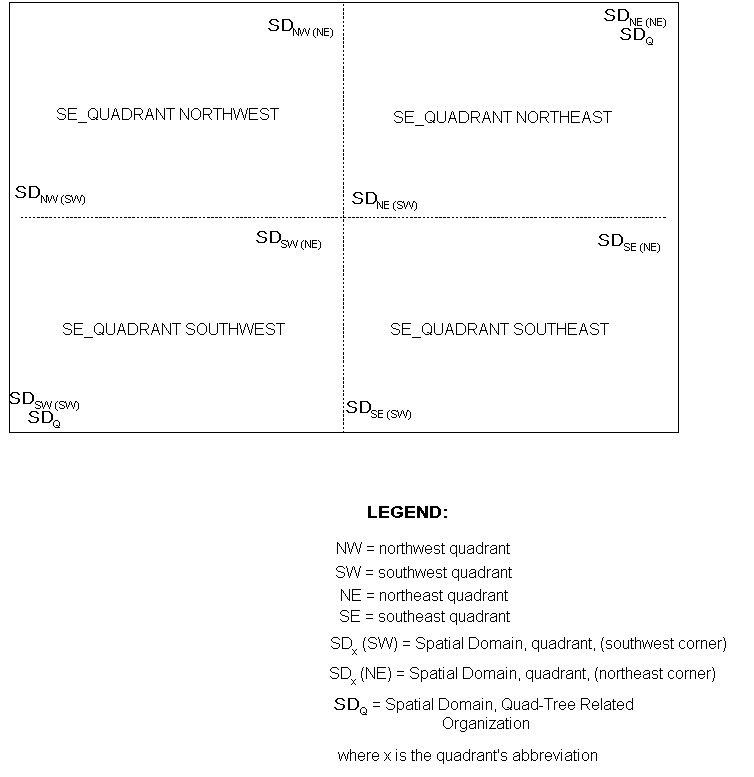QTRA shall have a <Spatial Domain>.
Each branch of QTRA shall comply with the following constraints.
| 2.1 | Each component representing a quadrant shall have a <Spatial Domain> component. In the case of quadrants represented by <Geometry Model Instance> or <Feature Model Instance> instances, the <Model> being referenced shall have the <Spatial Domain>. | ||||||||||||||||||||||||||||||||
| 2.2 | The regions defined by the branches shall not overlap; that is, the <Spatial Domain> components of the component hierarchies shall not overlap. | ||||||||||||||||||||||||||||||||
| 2.3 | The four possible quadrant components' <Spatial Domains> shall be defined in their native SRF within the area specified by the QTRA's <Spatial Domain> as follows.

Consider the bounding area defined by the <Spatial Domain> of QTRA, as divided into 4 quadrants of equal size. | ||||||||||||||||||||||||||||||||
|
The strict_organizing_principle and unique_descendants field values of QTRA shall be SE_TRUE.